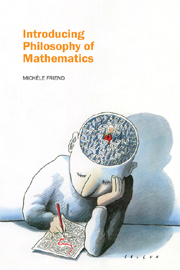4 - Structuralism
Summary
Introduction
There are three main current exponents of structuralism: Michael Resnik, Stewart Shapiro and Geoffrey Hellman. After the introduction in this chapter, §2 is a generally motivating section on structuralism. Section 3 discusses Hellman's modal structuralism. Section 4 compares Resnik's and Shapiro's structuralist positions and §5 critiques them.
In brief, the structuralist position states that mathematics is about structures, as opposed to mathematical objects such as numbers. Roughly, a structure is a pattern. There are geometrical patterns and numerical patterns. A mathematician knows about many of these, and studies them in depth. Patterns can be complex and abstract. Visually, an example of a very simple pattern is a smooth surface of a uniform colour; one of a very complex pattern is one generated by a fractal equation.
We might think that we cannot distinguish a pattern at all when we look at, say, a landscape, but although we may not see a symmetrical pattern, we do not see complete chaos. We see a cluster of trees, a meandering brook along a valley floor, a steep hillside. As soon as we make observations, we begin to order what we see. We might notice that there are two clusters of trees, one spanning part of the brook, the other perched on the hillside. We have started counting, and we are describing the spatial relations between the things we are picking out.
Information
- Type
- Chapter
- Information
- Introducing Philosophy of Mathematics , pp. 81 - 100Publisher: Acumen PublishingPrint publication year: 2007
